Ditapis dengan
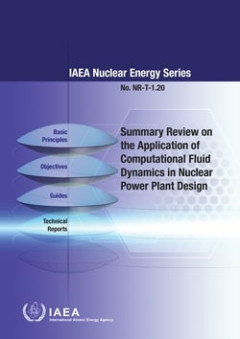
Summary Review on the Application of Computational Fluid Dynamics in Nuclear …
The IAEA’s statutory role is to “seek to accelerate and enlarge the contribution of atomic energy to peace, health and prosperity throughout the world”. Among other functions, the IAEA is authorized to “foster the exchange of scientific and technical information on peaceful uses of atomic energy”. One way this is achieved is through a range of technical publications including the IAEA…
- Edisi
- -
- ISBN/ISSN
- 978–92–0–100321–8
- Deskripsi Fisik
- 80 p
- Judul Seri
- IAEA nuclear energy series
- No. Panggil
- 621.039.5:532 IAE s

Benchmarks of Fuel Burnup and Material Activation Computational Tools Against…
Research reactors are powerful tools that contribute to scientific and technological progress worldwide. They are used for research and development in a wide variety of fields, in capacity building in nuclear science and technology, to produce radioisotopes crucial for medical and industrial applications, to support the development of national nuclear infrastructure, and in many other research …
- Edisi
- -
- ISBN/ISSN
- 978-92-0-101222-7
- Deskripsi Fisik
- 276 p
- Judul Seri
- IAEA TECDOC series
- No. Panggil
- 621.483 IAE b
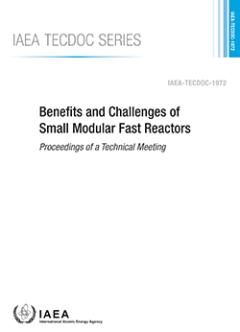
Benefits and Challenges of Small Modular Fast Reactors: IAEA TECDOC No. 1972
The IAEA ussually defines small and medium sized or modular reactors (SMRs) as reactors producing up to 300 MW(e) (small sized or small modular) and reactors producing 300-700 MW(e) (medium sized). There has been increasing interest in SMRs globally owing to their variois benefits, such as flexible power generation options, the wide range of applications, enhanced safety resulting from inherest…
- Edisi
- 2021
- ISBN/ISSN
- 978-92-0-124121-4
- Deskripsi Fisik
- 362 p
- Judul Seri
- -
- No. Panggil
- 621.483 IAE b
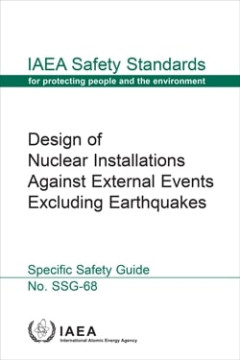
Design of Nuclear Installations Against External Events Excluding Earthquakes…
The status of the IAEA safety standards derives from the IAEA’s Statute, which authorizes the IAEA to establish or adopt, in consultation and, where appropriate, in collaboration with the competent organs of the United Nations and with the specialized agencies concerned, standards of safety for protection of health and minimization of danger to life and property, and to provide for their appl…
- Edisi
- IAEA Safety Standards Series.
- ISBN/ISSN
- 978-92-0-136121-9
- Deskripsi Fisik
- 112 p
- Judul Seri
- IAEA Safety Standards Series.
- No. Panggil
- 621.039.58 IAE d
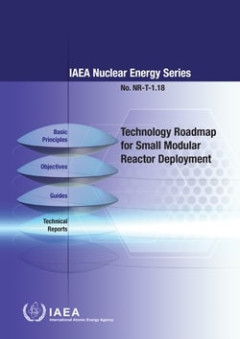
Technology Roadmap for Small Modular Reactor Deployment: IAEA Nuclear Energy …
Given the increasing interest of Member States in the near term deployment of SMRs, this publication presents several model technology roadmaps that States can adapt for their specific projects. For nuclear newcomer countries, these roadmaps assume that a Member State has already developed, or is at least well along the way to developing, the infrastructure necessary to carry out a nuclear powe…
- Edisi
- 2021
- ISBN/ISSN
- 978-92-0-110121-1
- Deskripsi Fisik
- 124 p
- Judul Seri
- -
- No. Panggil
- 621.039.5 IAE t
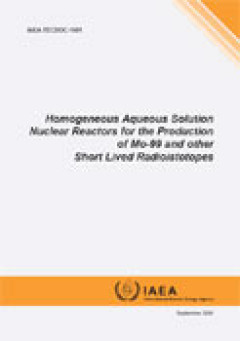
IAEA - TECDOC Series No. 1601 : Homogeneous Aqueous Solution Nuclear Reactors…
This publication presents a summary of discussions from a consultants meeting on the merits and challenges associated with the operation of aqueous homogeneous reactors (AHRs) for the production of the isotope technetium-99m (99mTc) and includes the technical presentations given by the participants during the meeting. Currently, 80% of all radiopharmaceutical procedures employ 99mTc, a product …
- Edisi
- -
- ISBN/ISSN
- 978–92–0–109708–8 / 1011–4289
- Deskripsi Fisik
- 93 p
- Judul Seri
- -
- No. Panggil
- -
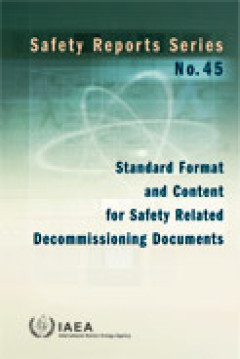
Standards Format and Content for Safety Related Decommisioning Document
This report provides information on the content and format for decommissioning plans and supporting safety related documents. Its scope includes information that is relevant to all types of nuclear facilities, ranging from nuclear power plants and reprocessing facilities to university laboratories and manufacturing plants. The report will be of interest to decommissioning planning engineers, pr…
- Edisi
- -
- ISBN/ISSN
- -
- Deskripsi Fisik
- 64 p. : Illus. ; 24 cm
- Judul Seri
- Safety Reports Series No. 45
- No. Panggil
- -
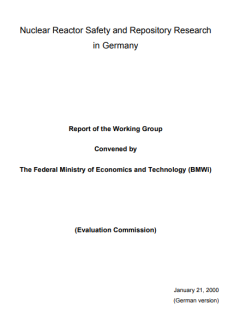
Nuclear Reactor Safety and Repository Research in Germany Report of the Worki…
The intensive funding of research in the field of nuclear reactor safety research by the German Federal Government in the last decades was a decisive contribution to keeping German reactors among the safest in the world. Considerable progress has also been made in the field of repository research which is regarded as being leading on an international scale. These achievements were made possible…
- Edisi
- -
- ISBN/ISSN
- -
- Deskripsi Fisik
- -
- Judul Seri
- -
- No. Panggil
- -
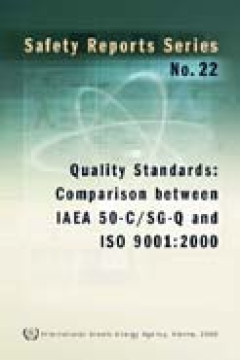
COMPARISON BETWEEN IAEA 50-C/SG-Q AND ISO 9001-2000, QUALITY STANDARDS (e-book)
This Safety Report compares the requirements of IAEA Safety Series No. 50-C/SG-Q, Quality Assurance for Safety in Nuclear Power Plants and other Nuclear Installations (1996), with the ISO 9001:2000 standard issued by the International Organization for Standardization. It identifies the main differences between the ISO quality standards and the additional requirements and guidance contained with…
- Edisi
- -
- ISBN/ISSN
- 9201111029 / 10206450; no. 22
- Deskripsi Fisik
- 57 p. : Illus. ; 29 cm
- Judul Seri
- Safety Reports Series No. 22
- No. Panggil
- -
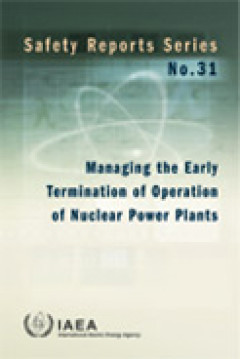
Managing the Early Termination of Operation of Nuclear Power Plants
When facing the decision of closing nuclear power plants (NPPs) before expiration of their operating licences, it is important that the same safety measures are applied to management concerns for strategic planning as are applied to technical reviews. These management and organizational issues are fundamental to any future decommissioning process. Managers at sites that decide to close early ma…
- Edisi
- -
- ISBN/ISSN
- 9201086032 / 10206450
- Deskripsi Fisik
- 48 p. : Illus. ; 24 cm
- Judul Seri
- Safety Reports Series No. 31
- No. Panggil
- -
 Karya Umum
Karya Umum  Filsafat
Filsafat  Agama
Agama  Ilmu-ilmu Sosial
Ilmu-ilmu Sosial  Bahasa
Bahasa  Ilmu-ilmu Murni
Ilmu-ilmu Murni  Ilmu-ilmu Terapan
Ilmu-ilmu Terapan  Kesenian, Hiburan, dan Olahraga
Kesenian, Hiburan, dan Olahraga  Kesusastraan
Kesusastraan  Geografi dan Sejarah
Geografi dan Sejarah